Leopard Frogs
I recently made a trip over to Cedar Mesa, in Utah. This was in a riparian area running through a desert canyon. It had intermittent pools of water, some of which also contained small fish.
I was surprised to find Lowland Leopard Frogs in the streams. They have been on the decline for years in Arizona. I’ve not seen them at all in my home of Montezuma County, Colorado. Supposedly the earlier settlers had trouble sleeping some nights because of the loud calls from Leopard Frogs.
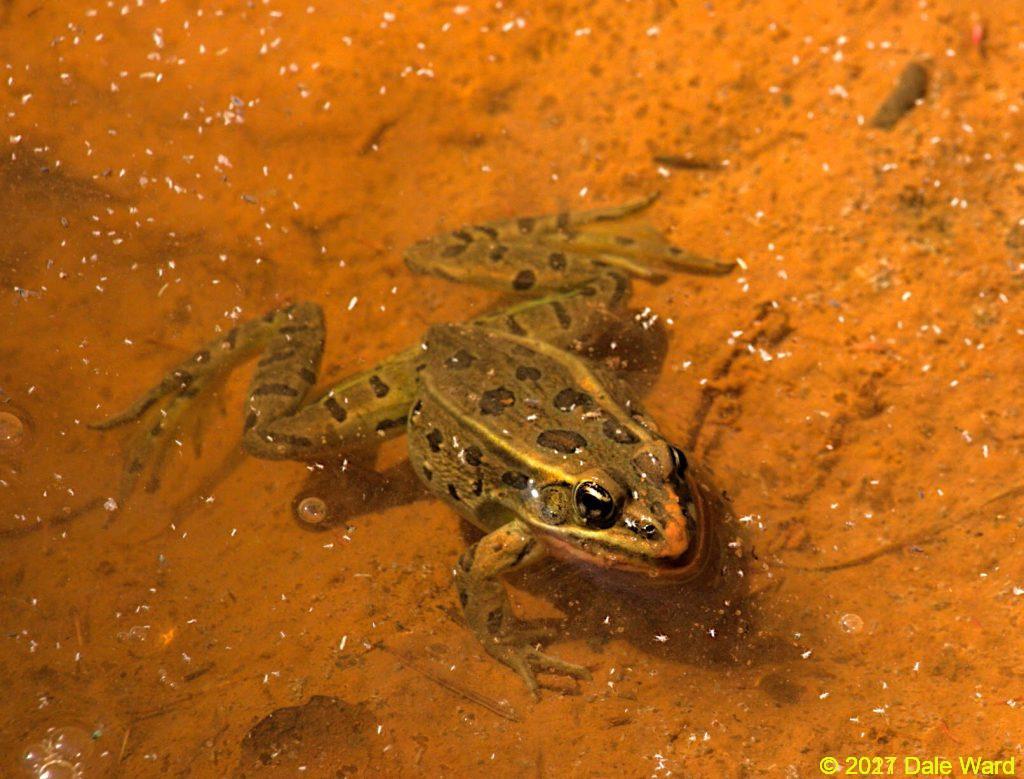 Lowland Leopard Frog from Cedar Mesa, Utah. The specks on the water surface are aphids and aphid skins.
Lowland Leopard Frog from Cedar Mesa, Utah. The specks on the water surface are aphids and aphid skins.
Why are they present in such numbers at this location in Utah? Is it a lack of agricultural waste, or is it that chytrid fungus and/or Ranavirus have not yet reached these populations?
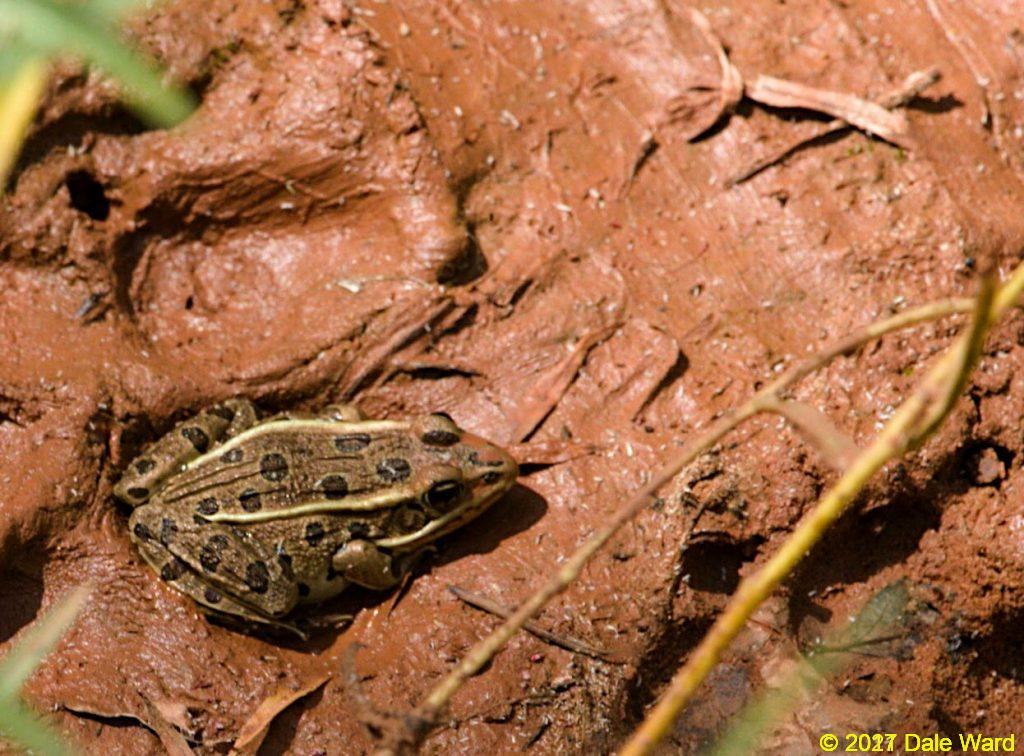 Lowland Leopard Frog from Cedar Mesa, Utah. He’s been sitting out of the water for a while, note how dry his skin is.
Lowland Leopard Frog from Cedar Mesa, Utah. He’s been sitting out of the water for a while, note how dry his skin is.
Here are a couple of pictures of the frog pools.
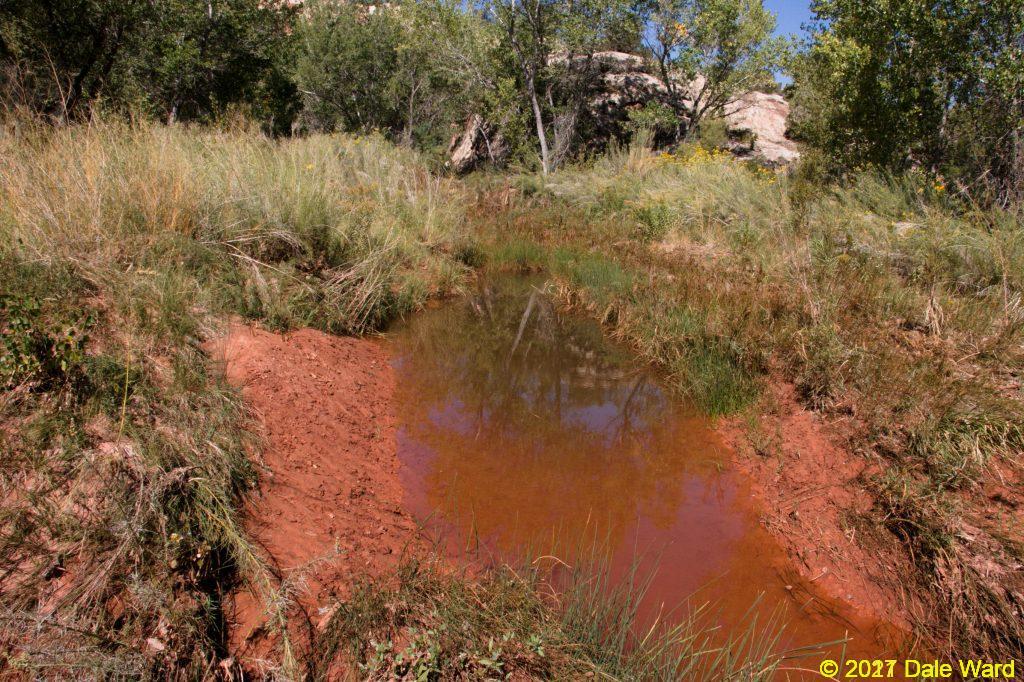 Some of the pools, such as this one, had banks that were lined with vegetation.
Some of the pools, such as this one, had banks that were lined with vegetation.
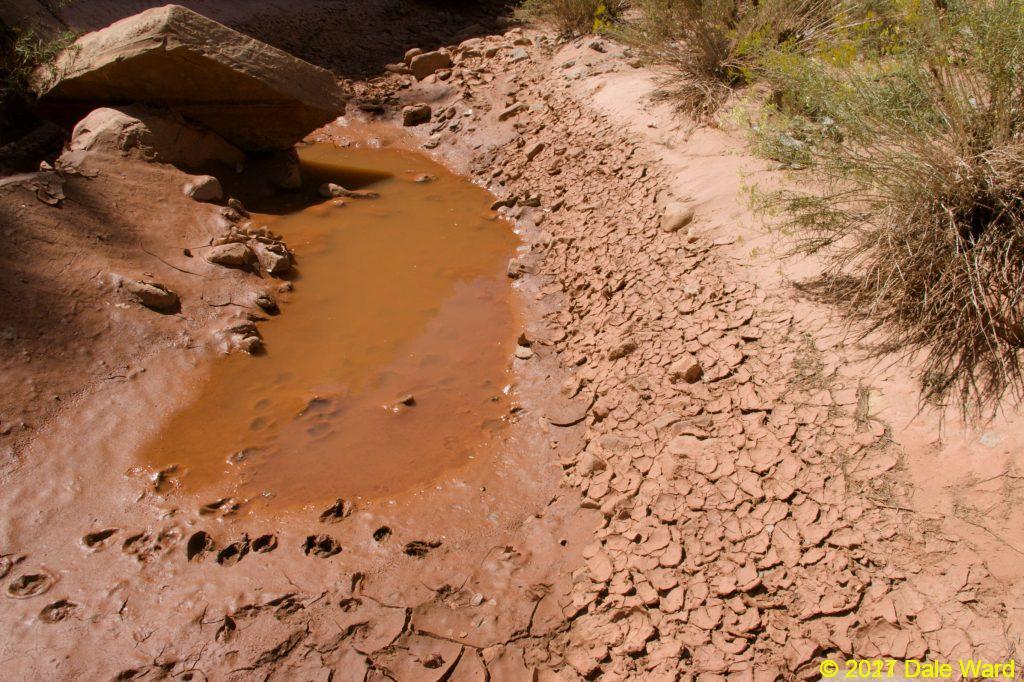 Other pools were very shallow and muddy, with little vegetation adjacent to the water. This particular pool has at least three frogs sitting in the proximal end of the pool, and it’s really not deep enough for them to swim and hide.
Other pools were very shallow and muddy, with little vegetation adjacent to the water. This particular pool has at least three frogs sitting in the proximal end of the pool, and it’s really not deep enough for them to swim and hide.
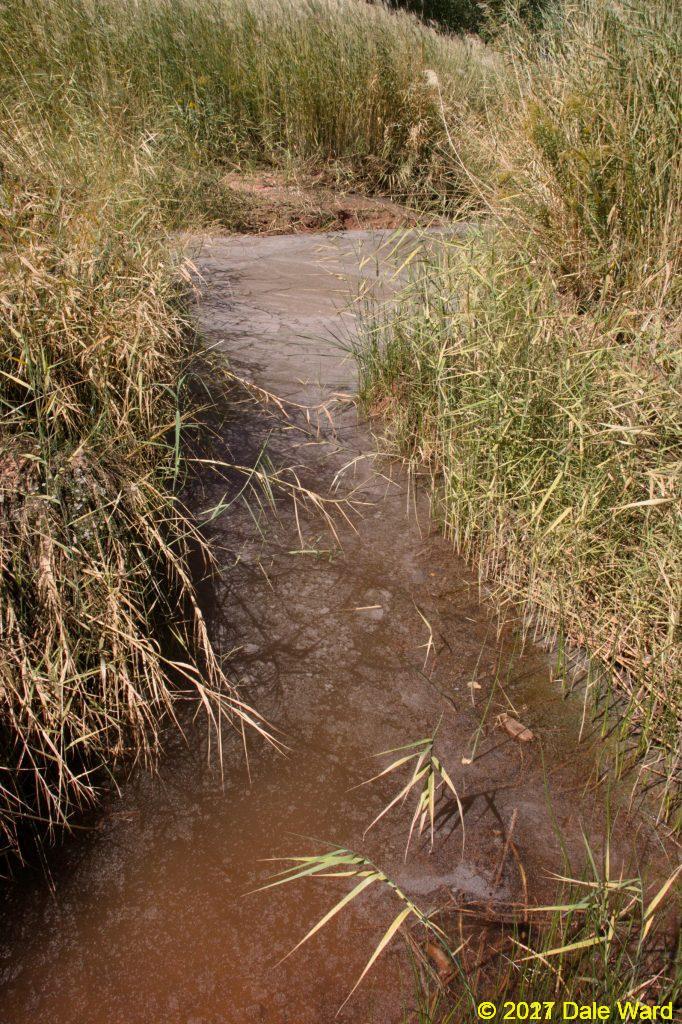 Some of the pools that did have surrounding vegetation had dense stands of some type of reed around them. I think this reed is _Arundo donax_ - the Giant Reed, an introduced species. Note also the white material floating on top of the water, looking almost like dust or scum. It’s actually aphids, and shed aphid skins.
Some of the pools that did have surrounding vegetation had dense stands of some type of reed around them. I think this reed is _Arundo donax_ - the Giant Reed, an introduced species. Note also the white material floating on top of the water, looking almost like dust or scum. It’s actually aphids, and shed aphid skins.
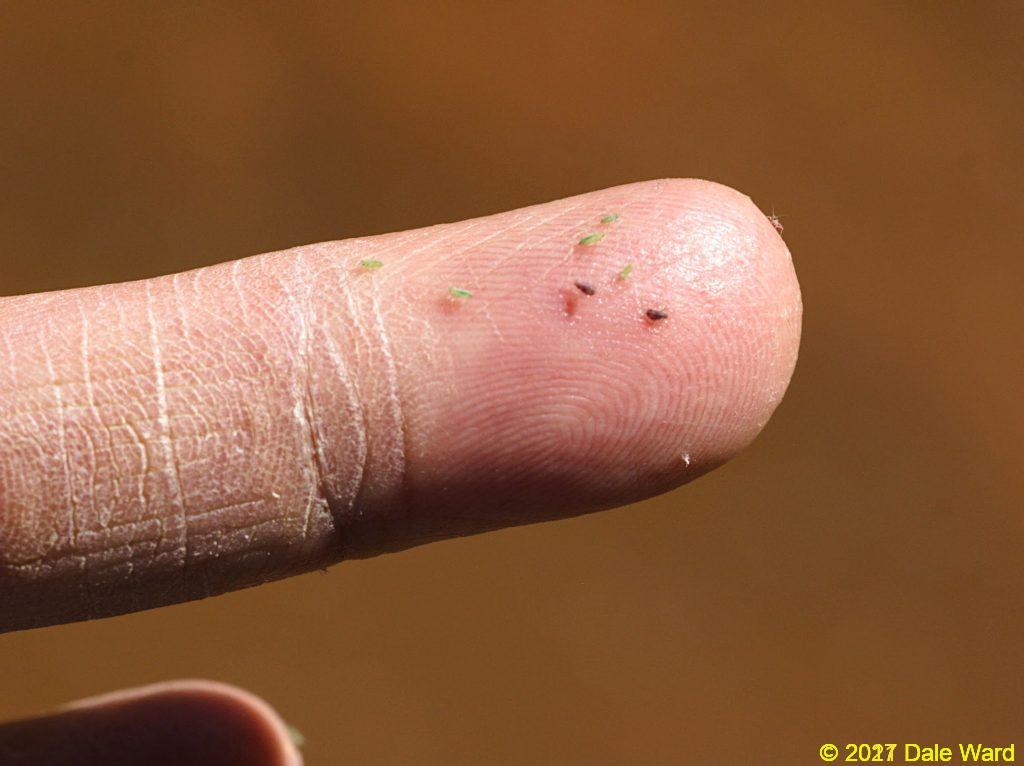 I dipped my finger into the water to get a closer look at the ‘scum’. It’s actually a layer of aphids that have fallen onto the water. Some of the aphids were just shed skins, but others appeared to be alive. I have no idea why aphids would be dropping into the water in those numbers - maybe because of the cold nights?
I dipped my finger into the water to get a closer look at the ‘scum’. It’s actually a layer of aphids that have fallen onto the water. Some of the aphids were just shed skins, but others appeared to be alive. I have no idea why aphids would be dropping into the water in those numbers - maybe because of the cold nights?
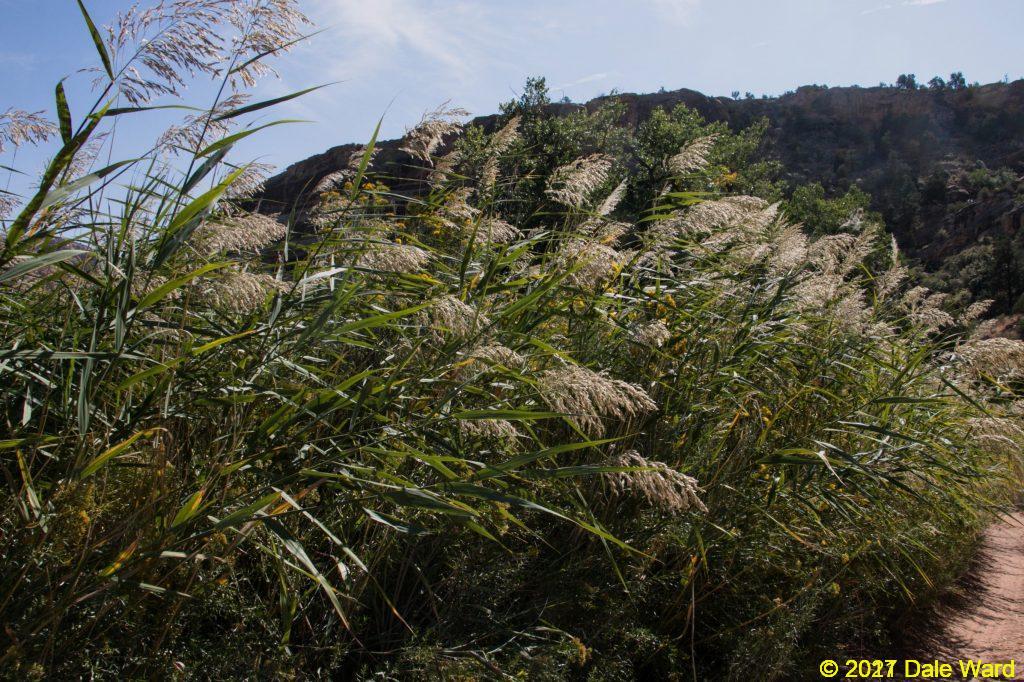 Here’s a close up of the dense grasses growing on the banks of the pools. Many of these were taller than I am - I’d estimate them at 7+ feet. I thought originally that these were the introduced rush _Phragmites_, but now suspect they might be another introduced species, _Arundo donax_.
Here’s a close up of the dense grasses growing on the banks of the pools. Many of these were taller than I am - I’d estimate them at 7+ feet. I thought originally that these were the introduced rush _Phragmites_, but now suspect they might be another introduced species, _Arundo donax_.
Not all of the pools surrounded by the reeds had the layer of aphids on the surface of the water. I saw a number of small fish in some of the frog pools. If I’d have thought of it at the time, I’d have checked to see if the pools that didn’t have the aphid layer were pools containing small fish.